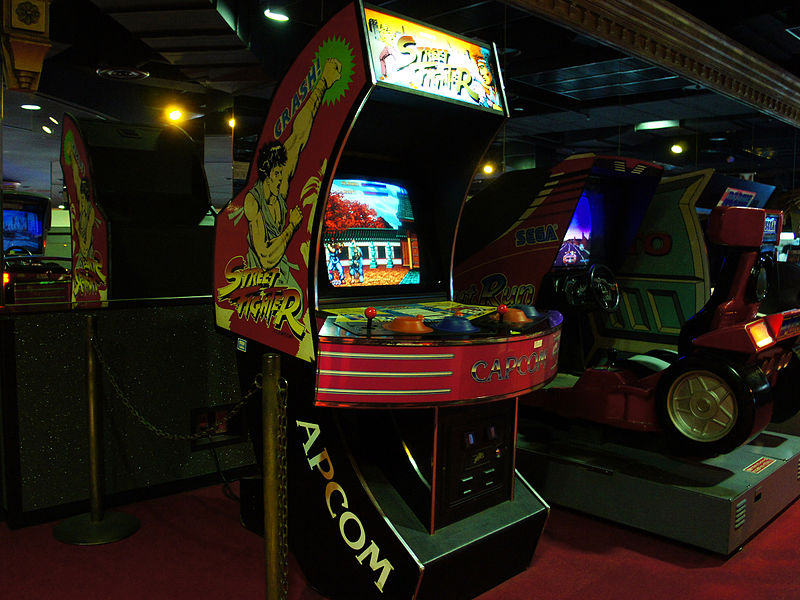
Last on our “Learning From The Best” series is a genre that only recently began making a comeback after a few years of seeing little attention. For many of us, it all started back in the late 80s and early 90s, when teenagers and adults alike flooded arcades to see who was the best at Street Fighter, The King of Fighters, and other great titles. Console gamers also enjoyed a rich library of fighting games throughout the decade, with groundbreaking (and often controversial) games like Mortal Kombat, Tekken, and Marvel vs. Capcom.
But eventually the genre started suffering a descent in popularity that would continue for nearly two decades. Plenty of great games from renowned franchises were released, but it was clear that fighting games were past their most prominent days. Fortunately, our fire for these games began growing again with the help of titles like Super Smash Bros, Street Fighter IV, and a few reboots.
The following are some ideas that we agree help make a fighting game both irresistible to play, and fun to watch:
Characters That Stand Out
It doesn’t matter how great a fighting game’s mechanics are, or how large their character roster is, if every fighter feels the same. In fact, they should not only have unique movesets, but should also look attractive and interesting. We’re not saying that one or few characters can’t play somewhat the same, like Ryu and Ken from Street Fighter, but there should be some variety or else your players will quickly get bored.
Besides the fast-paced gameplay, BlazBlue has always attracted gamers due to its colorful cast of characters. Robotic girls with floating swords, black blob-like creatures, giant red cyborgs, and the inevitable scantily-clad girl with animal ears; suffice to say, there’s no lack in diversity. But more importantly, every character not only looks different, but also plays nothing like the rest. Even if your fighting game ends up having less than 10 characters, make each one of them fun to play and you’ll have no problem gaining a crowd of fans.
A Great Story Mode
Truth be told, the average fighting game enthusiast isn’t likely to invest their time and money in a title simply for its single-player mode. This may be because this genre, which is far from the best in terms of a storytelling tool, is more about competing against other human players. However, it’s a huge plus when there’s a good story mode that lets you get familiar with characters, learn interesting backstories, and more.
A well-crafted game that ended up being a major success, both critically and commercially, Soul Calibur II had one of the better single-player modes of any fighting game at the time. It involved completing a variety of missions that offered interesting story texts as well as gold, which was used to buy new weapons and other unlockables. Watching the narrative unfold as you fight with characters wielding an arsenal of different weapons was far more enjoyable than the “fight through the roster” story modes that other games have.
A Fun, Approachable Combo System
There’s nothing more fun that putting together a string of hits that completely devastates your foe, especially when you’ve spent hours trying to perfect that very combo. At the same time, it’s easy for players to pick up a fighting game once and never touch it again if they find themselves frustrated by the fact that it only takes one failed block for their opponent to bring their health down to zero. In other words, combos should be fun to perform but not impossible to break out of.
Although there are plenty of good examples, we can’t help but go with Tatsunoko vs. Capcom. Despite being a Wii title with a roster filled with Japanese anime characters, it was praised for serving as the return of vs.-style gameplay. These titles have a mechanic called “Mega Crash” that can be performed at almost any time to break your opponent’s combo.
A Dab Of Innovation
To the average person, every fighting game appears the same. After choosing your characters (and sometimes stage), the players then press buttons either wildly or intelligently until one of the two is defeated. But to a game designer and avid fighting gamer, this is hardly the case. We know why Marvel vs Capcom, Tekken, and Guilty Gear, – or Dead or Alive and Killer Instinct – are different. To anyone considering developing their own fighting game, we recommend that you study how the little gameplay differences, not visuals or story, are what truly what set them all apart.
Of course, there’s only one game series we can think of that was infused with enough novelty to truly feel unlike any other fighting game out there: Super Smash Bros. Now one of the most popular games of the genre, the original Smash was groundbreaking for its gameplay that involved trying to knock opponents off the stage instead of depleting a health bar. Four players, unique character playstyles, and a percent-based system are a few of the many ways Nintendo did what they do best: innovate.
[su_note]Want a career in game design? Learn more about the School of Game Design at the New York Film Academy. [/su_note]

